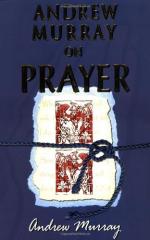|
This section contains 317 words (approx. 2 pages at 300 words per page) |
World of Genetics on Andrew Murray
British born American molecular biologist Andrew W. Murray is a professor of biology at Harvard University and serves as the director of the Center for Genomic Research. In 1983, Murry and Jack W. Szostak created the first artificial chromosome.
Murray's current research interests include studies regarding the structure and evolution of cells. Special areas of research under Murray's direction include studies regarding transmission of genetic information during cell division. In particular, as director of the Center for Genomic Research, Murray oversees research into the mechanisms of chromosomal sorting and segregation during meiosis. Research into genetic regulation and mechanisms of transmission during cell division may play a critical role in furthering medical understandings of the nature of cancerous cells. One aspect of many cancers is an unchecked growth or breakdown in self-regulation of the cell division process.
Using organism as diverse as yeast and amphibian eggs, scientists at CGR study the mechanisms of chromatid formation and separation.
Although his parents were American, Murray was born in England. In addition to his work at Harvard Murray holds the position of Associate Professor of Physiology at the University of California at San Francisco.
Murray found early inspiration to become a scientist while visiting America. In particular, Murray received early encouragement form MIT researcher Nancy Hopkins. Murray earned degree in biochemistry from Cambridge in 1978 and then undertook his graduate work at Harvard. While a graduate student, Murray conducted his thesis research under the direction of Szostak. At the time, Murray's work utilized innovative techniques to study yeast plasmid function and control. During their work with yeast, Murray and Szostak developed the methodology to create stable yeast artificial chromosomes. Yeast artificial chromosomes (YAC) are cloning vectors that can carry large DNA fragments. This large carrying capacity allows scientists the ability to study large regions of DNA while it remains intact. YACs also allow the cloning of large genes or gene complexes.
|
This section contains 317 words (approx. 2 pages at 300 words per page) |


